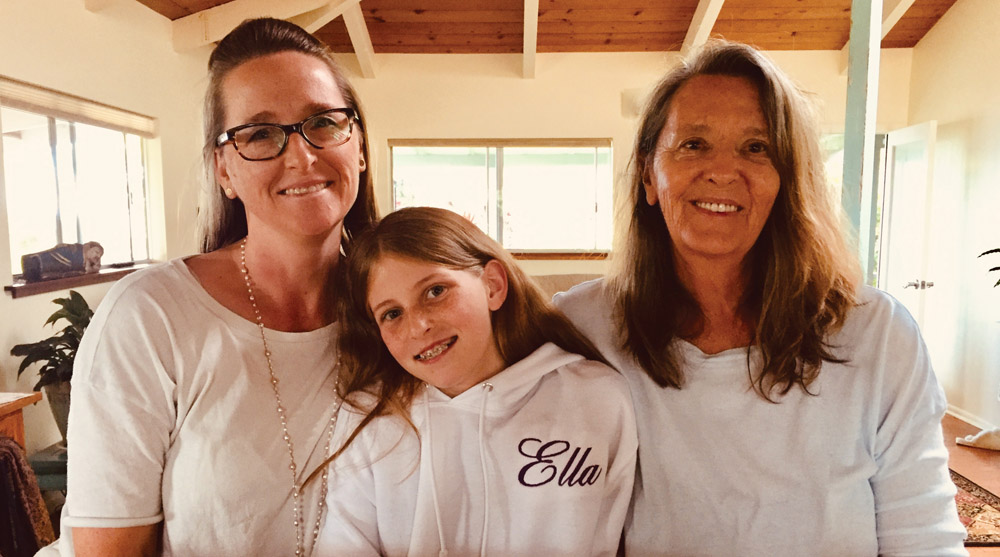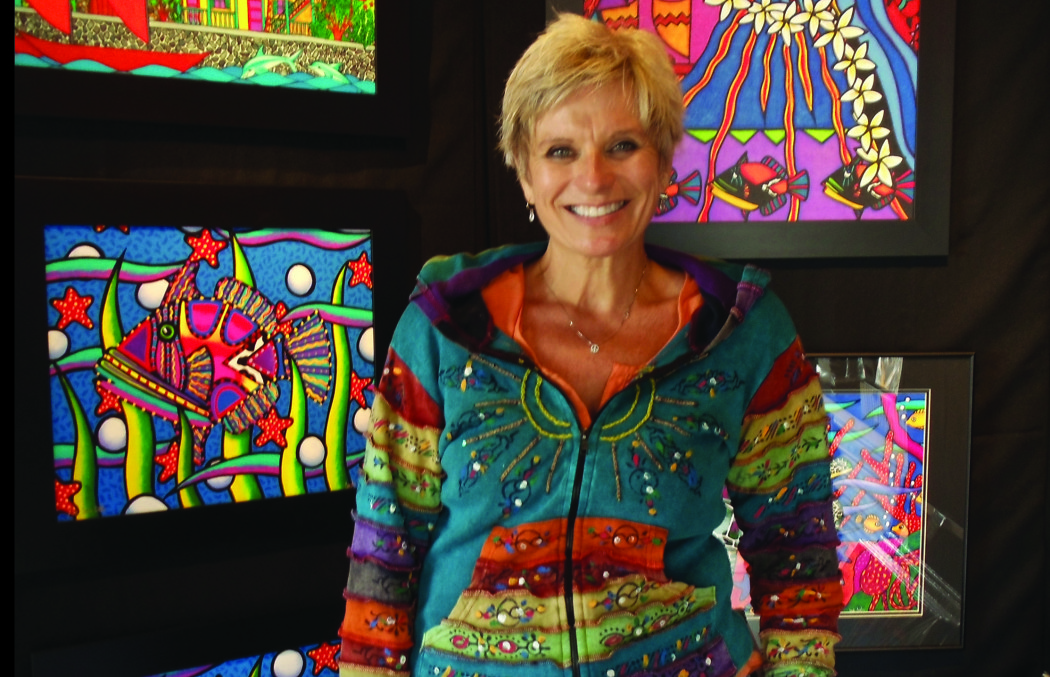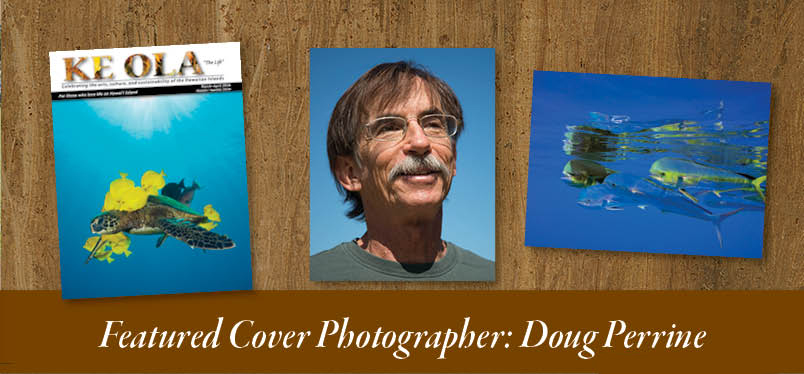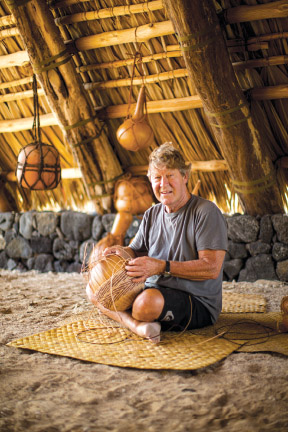
Gary Eoff: One Artist’s Voyage
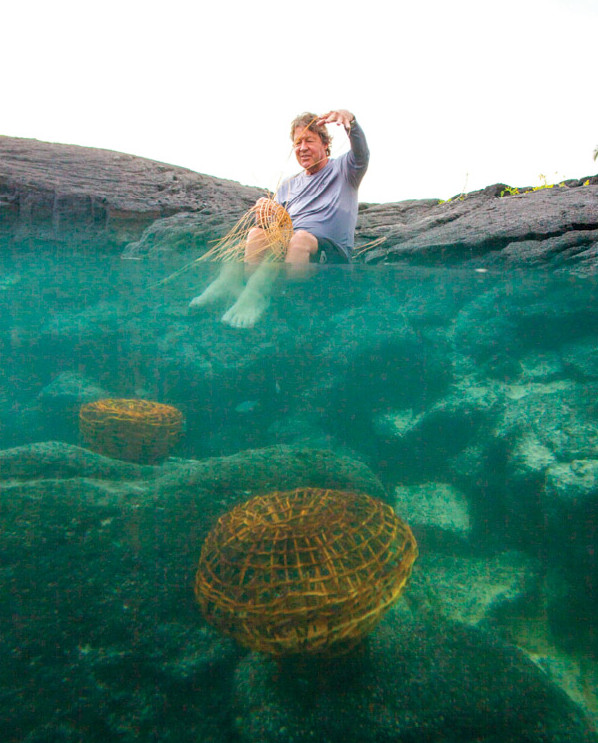
By Jan Wizinowich
Like the cordage he weaves, Gary Eoff’s art stretches back through time to honor and connect with the ancestors. Previously from California, Gary and his wife Karen came to Hawaiʽi in 1980 to surf and visit Karen’s sister, but found much more. “We fell in love with Hawaiʽi, went home and packed up,” reminisced Gary.
With a passion for art, traditional crafts and a thirst for learning, Gary has created an array of authentic Hawaiian artifacts that capture the highly advanced cultural practices of ancient Hawaiʽi. “I love the aesthetics and sensibilities of Hawaiian utilitarian objects,” said Gary.
Before coming to Hawaiʽi, Gary was mostly a three-dimensional artist. “Right from college I started being a craftsman. I did sculptures, including metal sculpture, and then jewelry. I carved a lot of shell and bone.”
It is not surprising that Gary’s first endeavor in Hawaiʽi involved making fishing lures, a utilitarian three-dimensional art form. Gary creates the inserts that use the colors and shapes of prey to entice big game fish to strike. The lures, which he still makes, are a collaboration with Marlin Parker, son of lure inventor dad George. “I didn’t know about fishing but I knew about crafting. Marlin, being a great fisherman, knows what makes a great lure. The action of the lure is as important as anything,” Gary explained.
Teachers
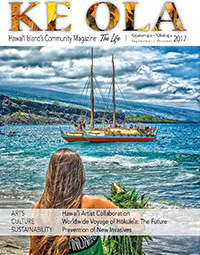
A convergence of Gary’s curiosity with encounters provided by a budding cultural renaissance and his connection to the Kohanaiki Beach area led him on an odyssey of exploration of Hawaiian crafts.
When the student is ready the teacher will appear and that is what happened when Gary met Angel Pilago at Kohanaiki Beach. In the late 1980s, when Kohanaiki came under threat of development, the Kohanaiki ʽOhana was born. “Angel was my first teacher and mentor and our Kohanaiki ʽOhana leader. [See accompanying story.] He’s a cordage master and his expertise is lashing, among other things. He taught me to make fishing equipment, tools, gourds and drums. Items that were used culturally at the beach.”
Angel, his wife Nita, Gary, and wife Karen began doing presentations centered on Hawaiian traditional and cultural practices and the importance of protecting our public trust resources. “We wanted to have the items to demonstrate the use of resources,” said Gary.
He continued to throw his net wide to discover other traditional crafts such as carving and tying gourds. They have decorative patterns and are lashed with cordage. “Tying the gourds is challenging. There’s only one knot at the beginning and one at the end, they’re all slip knots and there’s many different ways to do them.”
Before he could learn to tie them, Gary had to grow gourds and get the shapes right and study the pāwehe (tattoo designs) on the gourds.

He found his way to his next teacher when he attended a talk by expert weaver and cordage maker Willy McGlouthlin at the King Kamehmeha Hotel in 1992. “I had heard his name at a cultural festival. He was weaving mahiole (Hawaiian helmets) and he invited me to Puna. I studied with him for the next 15 years.”
You can’t learn about Hawaiian cordage without knowing about olonā. It’s the king of all cordage plants, endemic to Hawaiʽi and the strongest natural fiber in the world. “The Hawaiians planted it everywhere. It was used extensively in their material culture because of its strength and durability. It was tended constantly. It was said that if you grew one acre you were friends of the overseer, if you grew two acres you were friends with the chief and if you grew three acres you were friends with the King.”
From Willy, Gary learned the full circle of cordage making, its uses and weaving with ‘ie‘ie. “Willy had the touch and I learned the touch. Find it, mālama (care for) it, process it, use it. Willy’s main message was to protect the resource and to gather it in a sustainable way. You don’t harvest unless you give back and I didn’t get any plants until I made them flourish in the forest.”
Cordage making connected him to another of his teachers, Dr. Isabella Abbott. “She gave a talk and I went with my olonā sling. She knew what it was and invited me to come to Bishop Museum. I spent one whole day down in the basement with the feathered capes. She would have them get out everything that was made with olonā. I could touch it, feel it, look at it.”
Gary’s interest in printing designs on Hawaiian kapa led him to master printer, Hiroki Morinoue in Hōlualoa. “I learned various styles of printing—monoprint, western printing using a printing press, and eastern style printing using a bamboo baren.”
Cultural Implements and Voyaging Arts
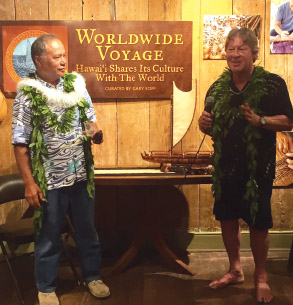
Through the mounting of wayfinding and cultural exhibits, Gary has shared his passion for the knowledge and skills of the early Hawaiians. This comes through in the meticulously researched artifacts he creates and makes available to anyone. “I think it’s so important that people can handle the actual objects.”
Entering the Eoff’s living room is like entering a miniature museum that illustrates Gary’s creative craftsmanship over the last 30 years. Every corner and wall space is covered with the evidence of a life spent studying and honing his crafts. A post is draped with gourds, recessed shelves serve as displays of various weapons and implements and mahiole march atop a bookshelf.
Gary reaches into the refrigerator and removes a partially completed mahiole, the most complex of weaving crafts. On average it takes about 200 hours to weave. Using iʽeiʽe fiber, the mahiole is woven over a carved wood head form. Its fine weaving and snug fit provided protection for chiefs going into battle.
The star compass is one of Gary’s recurring themes. “My main focus is on the voyaging canoe and the celestial star compass used for deep ocean navigation by early Polynesians.”
In collaboration with local artists Dave Reisland (marquetry) and Cliff Johns (wood turner), the star compass was transformed into several three-dimensional wood inlay pieces, one of which won first place at the Hawaii Wood Guild show in 2016. Gary also worked with Pwo Navigator Kālepa Baybayan to create a 17-foot diameter star compass employed as part of the educational program at Kohanaiki Beach Park. A recent collaboration stems from Gary’s curiosity about the ancient skill of bird catching, and pairs a woven bird cage with a painting by local artist, Dominic Tidmarsh.
Worldwide Voyage: Hawaiʽi Shares Its Culture with the World
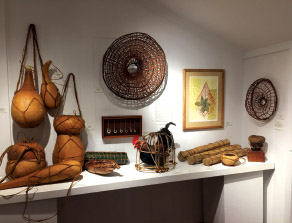
When the Hōkūle‘a sailed up the Potomac River to the Smithsonian, it carried a traveling exhibit of traditional crafts created by Gary. This evolved into the Worldwide Voyage: Hawaii Shares its Culture with the World, an exhibit inspired by the three-year voyage. Initially mounted at the Volcano Art Center, it’s currently at Isaac’s Art Center until Sept. 30, 2017.
The exhibit evolved through a request from the Hōkūle‘a ʽOhana Waʽa. “They decided they were going to tour the East Coast extensively, so they wanted an exhibit. I got together with Ed Kaneko, master lauhala weaver, Cliff did bowls and Dave helped with the wood.”
The collection traveled on the Hōkūle‘a, up the East Coast and a larger exhibit was put on display at the Smithsonian during a festival to celebrate Hōkūle‘a’s journey. “I thought of telling the story of the Worldwide Voyage. The items are all on display with photos of the voyage from ‘Ōiwi TV. There’s also some art by Dave, Cliff and me that’s contemporary and inspired by the voyage.”
Aʽo: To Teach is to Learn, To Learn is to Teach

For many years, Gary concentrated on learning the art, but through his teachers he came to realize that’s only part of the process. When you have discovered and developed skills, it’s time to pass them on, which Gary does through exhibits and continuous workshops.
Coming up at the Volcano Art Center is a series of rotating exhibits focused on specific aspects of traditional arts. “Every time I speak with him it’s like a whirlwind of information. He has so much to share that we’ve committed to doing these rotating cultural exhibits,” said Emily Weiss, Volcano Art Center Director.
The key to our future lies in the past and through his journey with Hawaiian cultural crafts, Gary has come to understand how the wisdom, traditional practices and skills of the ancestors can protect the land and ocean resources for the future. ❖
To see more of Gary Eoff’s work visit garyeoff.com.
